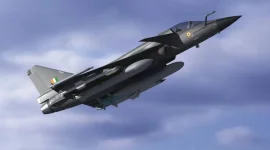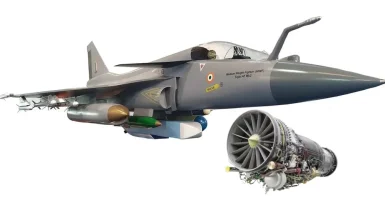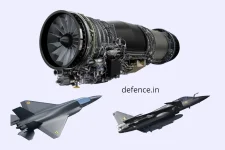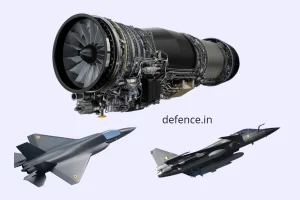- Views: 8K
- Replies: 15
Hindustan Aeronautics Limited (HAL) has announced an updated schedule for the first flight of the Tejas Mk2, India's advanced Light Combat Aircraft (LCA). The maiden flight of the first prototype, currently in production, is now planned for the first quarter of 2026, between April and July.
This represents a minor shift from the earlier target of late 2025.
The information, also confirmed by the Aeronautical Development Agency (ADA), highlights India's ongoing efforts to strengthen its self-reliant defence aviation sector. The Tejas programme is a cornerstone of India's ambition to develop and manufacture its own combat aircraft.
The Tejas Mk2, also referred to as the Medium Weight Fighter (MWF), is being developed as a 4.5-generation multirole combat aircraft. It is engineered to significantly improve upon the capabilities of the existing Tejas Mk1 and Mk1A versions and to meet the demanding operational needs of the Indian Air Force (IAF).
Key enhancements include a larger body, the addition of close-coupled canards for better manoeuvrability, a more powerful General Electric F414-INS6 engine, and sophisticated avionics. This new aircraft is intended to replace ageing fleets in the IAF, such as the SEPECAT Jaguar, Dassault Mirage 2000, and Mikoyan MiG-29.
Technologically, the Tejas Mk2 will feature an Active Electronically Scanned Array (AESA) radar for superior target detection, an inbuilt Infrared Search and Track (IRST) system, and the capacity to carry a range of Indian-developed weapons, including the Astra air-to-air missile and the BrahMos-NG air-launched cruise missile.
Officials at HAL report that the assembly of the prototype is advancing well, with more than 60% of the aircraft's structural work completed as of early 2025. Important sections like the central fuselage and wings have already been joined, while the front and rear fuselage components are close to being finished.
The assembly is taking place at HAL's facility in Bengaluru, making use of the established network of suppliers from the Tejas Mk1 project to maintain quality and efficiency.
To support the prototype's development and subsequent testing phases, six F414-INS6 engines have already been delivered to the ADA.
The slight adjustment in the first flight timeline is attributed to the intricate task of integrating advanced subsystems, such as new avionics and electronic warfare systems, which demand thorough testing to ensure they are fully operational and reliable.
The public unveiling, or rollout, of the Tejas Mk2 prototype is anticipated by November or December 2025. This will be followed by a period of ground testing from December 2025 to March 2026, which will include engine performance checks and taxiing trials at both low and high speeds. These ground trials are essential to verify the proper functioning of all aircraft systems before it undertakes its first flight.
HAL plans a functional rollout, focusing on achieving technical targets to speed up the testing process, rather than a large ceremonial event.
The IAF aims for the Tejas Mk2 to receive its basic Initial Operational Clearance (IOC), a certification that an aircraft is airworthy and ready for initial operations, by 2028. Series production is expected to begin in the 2028-2029 timeframe, with the aircraft projected to enter service with the IAF by 2030.
Initial plans are for the production of 110 to 120 aircraft, with the potential for total orders to reach up to 210 units, which would equip six IAF squadrons.
The Tejas Mk2 programme received a significant boost in September 2022 when the Cabinet Committee on Security (CCS) sanctioned ₹10,000 crore for the development of prototypes and subsequent testing.
Despite facing some earlier delays related to funding and an increased requirement for locally sourced components (from 65% to 80%), HAL's refined project management and partnerships with private sector companies have helped to speed up progress.
The aircraft is set to begin with an indigenous content level of 82%, which is expected to rise to over 90% once the engine is produced under license in India.
This emphasis on local production is a key part of India's strategy to achieve greater self-sufficiency in defence manufacturing, reducing reliance on foreign suppliers and boosting the domestic industry.
As the Indian Air Force continues its drive to modernise its aircraft fleet in response to regional security considerations, the Tejas Mk2 is expected to be a crucial asset. It will operate alongside the planned fifth-generation Advanced Medium Combat Aircraft (AMCA), further strengthening India's air power.
With an increased weapons payload capacity of 6,500 kg, longer operational range, and multiple stations for carrying a variety of weapons, the Mk2 is designed to fill the capability gap between the current LCA Tejas variants and more advanced future stealth fighters.
The successful rollout and first flight of the Tejas Mk2 in 2026 will be important achievements in India’s journey towards creating a strong, indigenous aerospace industry.




